Estimated reading time 10 minutes, 48 seconds.
Over the past 75 years, Pilatus Aircraft Ltd. of Stans, Switzerland has been designing and building specialized aircraft. Thirty years ago, the company identified an opportunity in the business aviation industry, when Beech King Airs ruled the corporate turboprop market. Pilatus’ cabins were the ideal size for a variety of missions that extended beyond their original role, and they calculated there would be demand for a King Air competitor that could carry a similar payload, over a comparable distance, at a similar cruise speed.
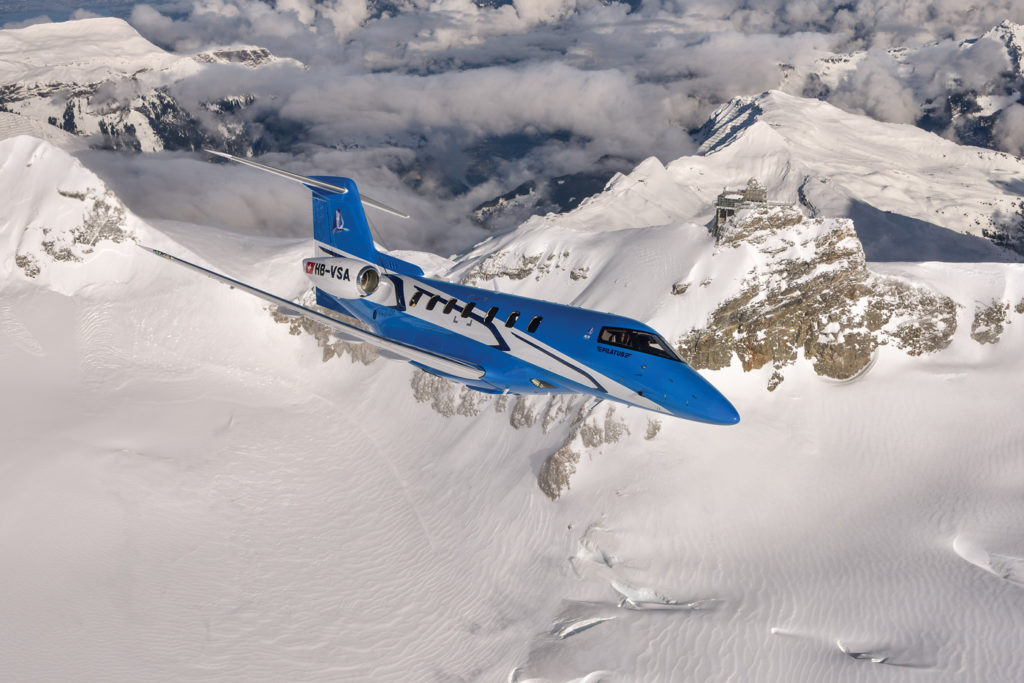
The Swiss company figured that if such an aircraft could also operate out of shorter runways, doing so with a single engine at a lower cost, there would be keen interest from corporate operators. The new aircraft, the PC-12, first flew on May 31, 1991. Since then, more than 1,650 examples have been delivered around the world. Today, just over 100 operate within Canada.
More recently, Pilatus analyzed the light jet market and determined there would be interest in a new design that featured a larger cabin, enabled access to many more airfields – including unimproved landing strips – and had a competitive purchase price. The new model would be called the PC-24.
The target market
A “light” business jet has a maximum takeoff weight of less than 20,000 pounds (9,071 kilograms). Purchasers of new models in this category tend to be companies, government entities, fractional ownership programs and families. Given their lower valuations, previously-owned examples have proven to be popular with charter and air taxi operators.
The competition
Two models currently predominate the market niche that Pilatus is pursuing with the PC-24: the Embraer EMB-505 Phenom 300/300E and the Cessna 525C Citation CJ4.
The Phenom 300 first flew on April 29, 2008 and the 500th example, a Phenom 300E, was delivered on March 25, 2019. The Citation CJ4 flew for the first time on May 5, 2008, and the 300th unit was delivered on June 27, 2019.
The new player
Five years after the first flights of both the Phenom 300 and the Citation CJ4, the PC-24 was introduced at the European Business Aviation Convention & Exhibition (EBACE) in Geneva, Switzerland, on May 21, 2013. The prototype rolled out from the plant in Stans on Aug. 1, 2014, and flew for the first time on May 11, 2015. EASA and FAA type certifications were received on Dec. 7, 2017.
Given the established presence of the Embraer and Cessna models, Pilatus had to offer an airplane that differentiated itself from the two incumbents if it was to be successful.
The specifications and key performance numbers of the three aircraft indicate that the PC-24’s maximum cruise speed, maximum range and payload capability are all similar to its two primary competitors. What separates it from the competition, however, is its ability to operate out of 10 per cent shorter hard surface runways at maximum takeoff weight, and its larger cabin.
Sometimes, numbers don’t tell the whole story. A closer look at the PC-24’s design reveals some unique features in this market niche.

The cabin
The 501 cubic foot (14.2 cubic metre) cabin volume is more than 50 per cent greater than its key competitors. Unlike the others, the PC-24’s cabin floor is flat. The spacious interior permits a variety of executive layouts, including a typical six-seat arrangement, double-club seating for eight, or a 10-seat commuter arrangement. Regardless of the format, all seats can be removed quickly to create a mini jet freighter. Alternatively, the PC-24 can be outfitted as a flying intensive care unit, with a dedicated configuration featuring three stretchers, seats for two medical personnel and the requisite medical equipment.
A unique feature of the PC-24’s cabin is the large cargo door. Located just aft of the port wing and ahead of the engine, its generous size (51 x 49 inches / 1.30 x 1.25 metres) permits the loading of bulky items that are too large for the main door.
The engines
The PC-24 is the first application for Williams International’s Quiet Power Mode (QPM) feature, a variant of the FJ44-4A designed to idle at a slightly lower than normal RPM level. This enables a PC-24’s starboard engine to run quietly, as the aircraft waits between flights, and it acts like an auxiliary power unit (APU) to provide power for the avionics and cabin climate controls. The elimination of an APU reduces weight, noise levels and associated expenses.
Williams’ EXACT passive thrust vectoring nozzle technology is also unique to the PC-24. It deflects the exhaust upwards by three per cent, thereby contributing to a shorter takeoff run.
To prevent the engines from ingesting foreign object debris (FOD), Pilatus positioned them above the fuselage’s centre line, and to further protect the engines from FOD, the sizeable double-slotted Fowler flaps extend down 37 degrees and act as shields.
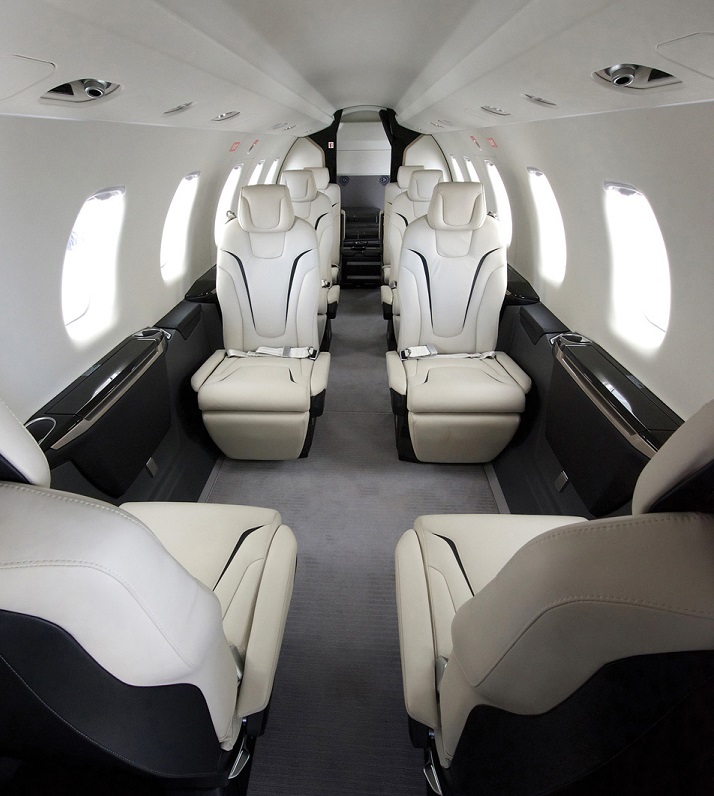
The nacelles
Unlike many corporate jets, the PC-24 is not equipped with thrust reversers. Instead, its sizeable ground spoilers deploy automatically upon touchdown. In addition, multifunction spoilers are available to provide additional lift-dump on landing. The lack of thrust reversers saves weight, reduces possible damage from deflected FOD on unimproved surfaces, and enables much quieter arrivals.
The landing gear
The PC-24’s trailing-link main gear features oleo strut shock absorbers to make a rough landing feel smoother. This is appreciated when landing on surfaces such as grass, gravel, dirt, ice and even crushed coral. Also, the nose wheel is fitted with chines to deflect FOD, and the aircraft’s four main gear tires are larger low pressure (72 psi) models. Pilatus claims that the PC-24 can operate out of some 7,500 airfields within North America – approximately 70 per cent more than the 4,400 that can be accessed by its key competitors.
Market reaction
At the EBACE gathering in Geneva in May 2014, Pilatus announced it would take orders for up to 84 units, priced at US$8.9 million apiece. The PC-24 order book was filled within 36 hours.
Given that the prototype didn’t fly until a year later, this was an early indication of the market’s enthusiasm. At the EBACE meeting in May 2019, another 80 aircraft were offered at US$10.7 million apiece, and more than 40 were purchased during the first day.
Today, more than 40 PC-24s are based in 11 countries, including Australia, Canada, Chile, Denmark, Poland and South Africa. So far, the operators include corporate flight departments, fractional ownership programs, an air ambulance organization and individuals who fly their own aircraft.

When Skies asked if brand loyalty played a role in generating sales, Tom Aniello, Pilatus vice-president, Marketing, noted that most of the early PC-24 orders were from PC-12 operators.
“This percentage is skewed, as we offered the new jet to some of our best long-term customers first before going out to non-Pilatus operators,” he said, adding that many prospective buyers had admired the PC-12, but required a twinjet.
Demand versus supply
Pilatus is currently building three PC-24s per month, and the rate is expected to increase to four per month throughout 2020. The plant at Stans can produce up to five PC-24s monthly.
“While demand is very high for the PC-24, we want to avoid saturating the market and will build at a rate slightly less than market demand over a long period of time,” explained Aniello.
This enlightened production philosophy results in enhanced residual values, and enables privately-held Pilatus to achieve a stable rate of growth over many years.
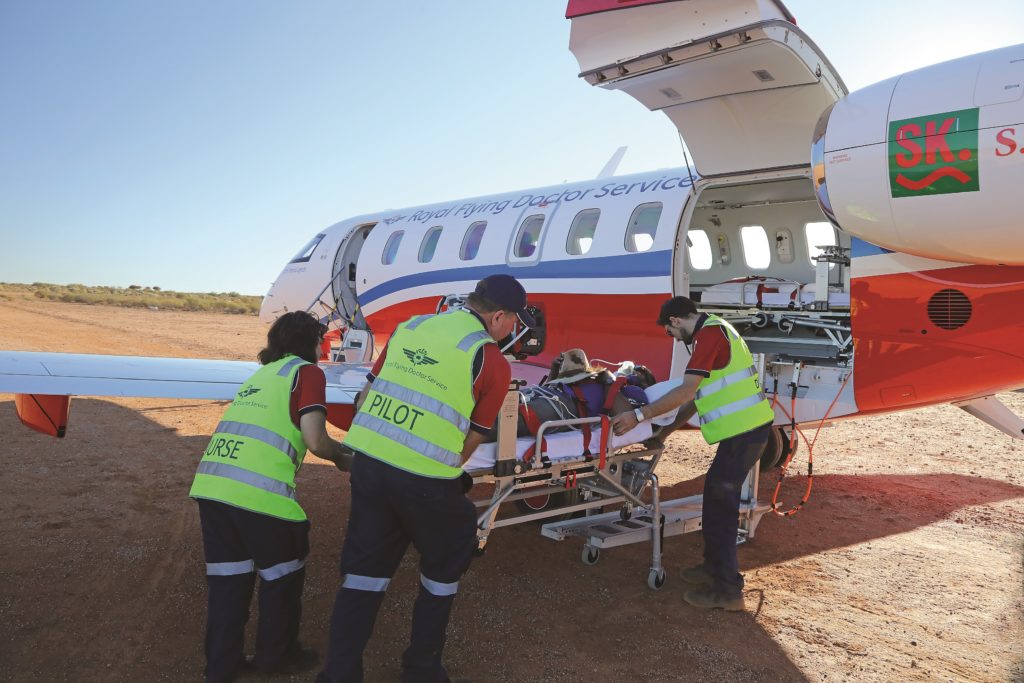
Operational experience
PlaneSense, Inc. of Portsmouth, N.H., became the PC-24 launch customer when it took delivery of serial number 101 on Feb. 8, 2018. That airplane has since accumulated approximately 1,230 hours with the fractional ownership operator.
When Skies asked George Antoniadis, the company’s founder and CEO, about the type’s entry into service, he said, “Operating the first of a completely clean sheet design jet, we expected that we might experience some reliability issues. We were surprised that there were very few with the PC-24. We were also extremely satisfied with the support we received from Pilatus during the run-up of our operations.”
Today, PlaneSense flies each of its three PC-24s about 70 hours per month. Antoniadis noted that PC-24 owners appreciate the aircraft’s ability to access 3,000-foot (915-metre) runways closer to their ultimate destinations. The model has also demonstrated its high elevation prowess, by accessing the 4,450-foot (1,356-metre) strip – 6,882 feet or 2,098 metres above sea level – at Steamboat Springs, Colo.
The Canadian context
The PC-24 received its Canadian type certificate on June 27, 2019, and the first Canadian registered example was delivered to a corporate operator in Montreal just days later.
Robert Arnone, president of Levaero Aviation, Pilatus’ exclusive Canadian distributor, told Skies, “We continue to receive significant interest in the PC-24 from a variety of Canadian operators, and project this interest to continue for the foreseeable future.”
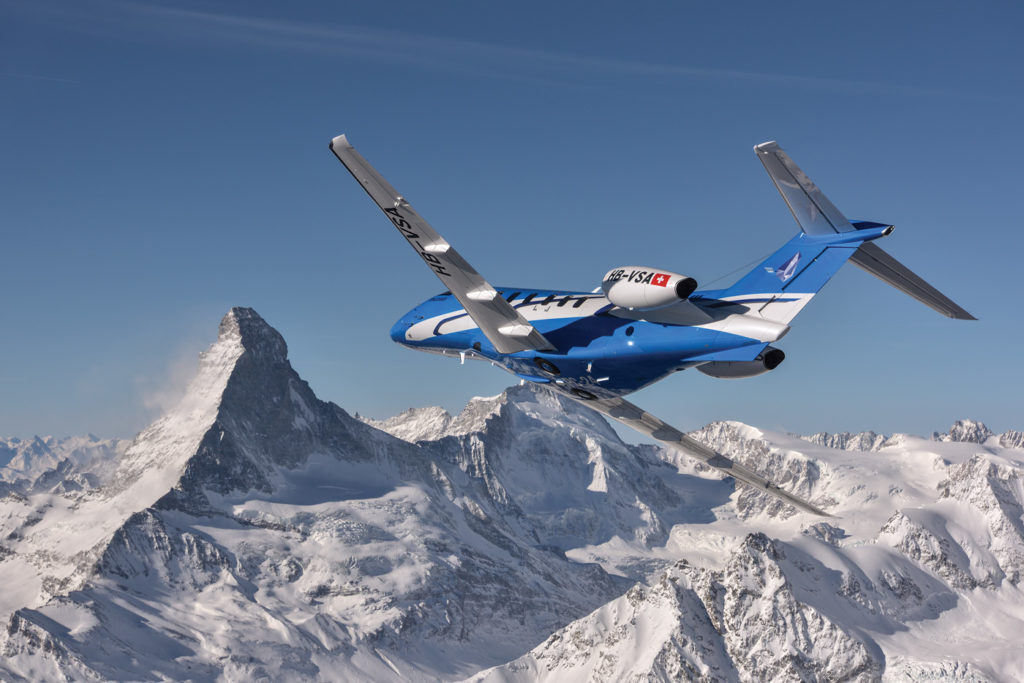
To gain an appreciation for the PC-24’s potential within Canada, it’s helpful to examine how the country’s 100-plus single-engine PC-12s are being utilized. According to the Canadian Civil Aircraft Register, approximately half of those aircraft are currently flown by six operators: the RCMP (16), Chrono Aviation (9), North Star Air (9), Ornge (8), Air Bravo (6) and Wasaya Airways (4). They are used for a wide range of missions related to law enforcement, medical emergencies, high priority cargo shipments, scheduled passenger services, and charters for corporate and recreational purposes.
Given the PC-24’s ability to access remote airfields, its speed and its range capability, it should have a bright future across Canada for decades to come.
Final words
Pilatus refers to its PC-24 as the “Super Versatile Jet.” Despite being in the light jet category, it provides a midsize jet cabin. Its versatility is confirmed by its range of quickly changeable interior layouts and by its ability to access almost 20,000 airfields around the world.
With the additional qualities of meticulous construction and proven operational reliability, the aircraft is a work of aeronautical art – one that is just as much at home on a remote wilderness strip as it is gracing the ramp at a busy cosmopolitan FBO.
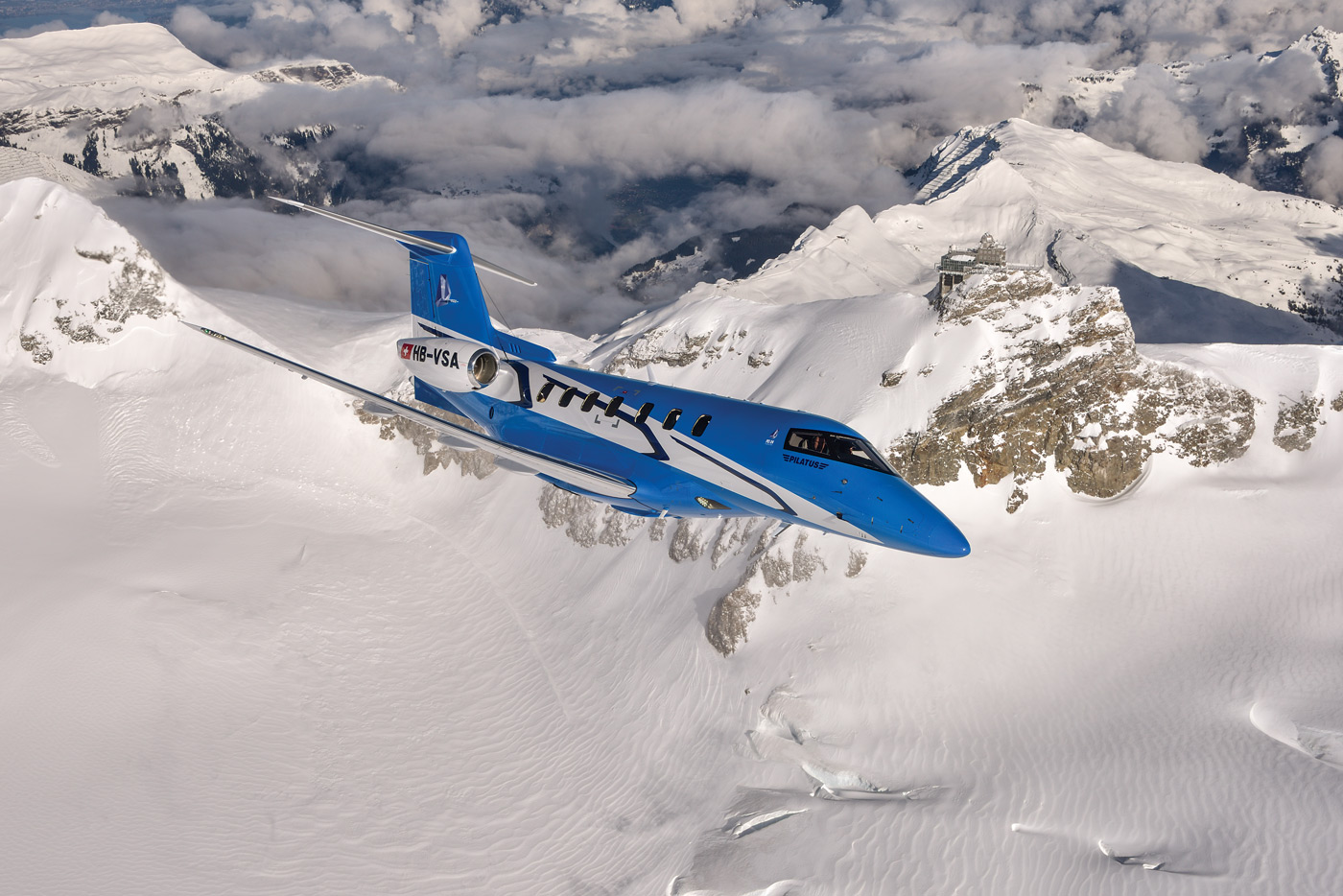

Over the yrs i have greatly admired the performace capabilities of the pc-12. If i had the money it would be my dream plane. For those that do have the money and the need its hard to see how they could go wrong w the 24.
En Colombia hay alguna firma que tenga un PILATUS PC – 24
Cuánto tiempo demora una entrega.?